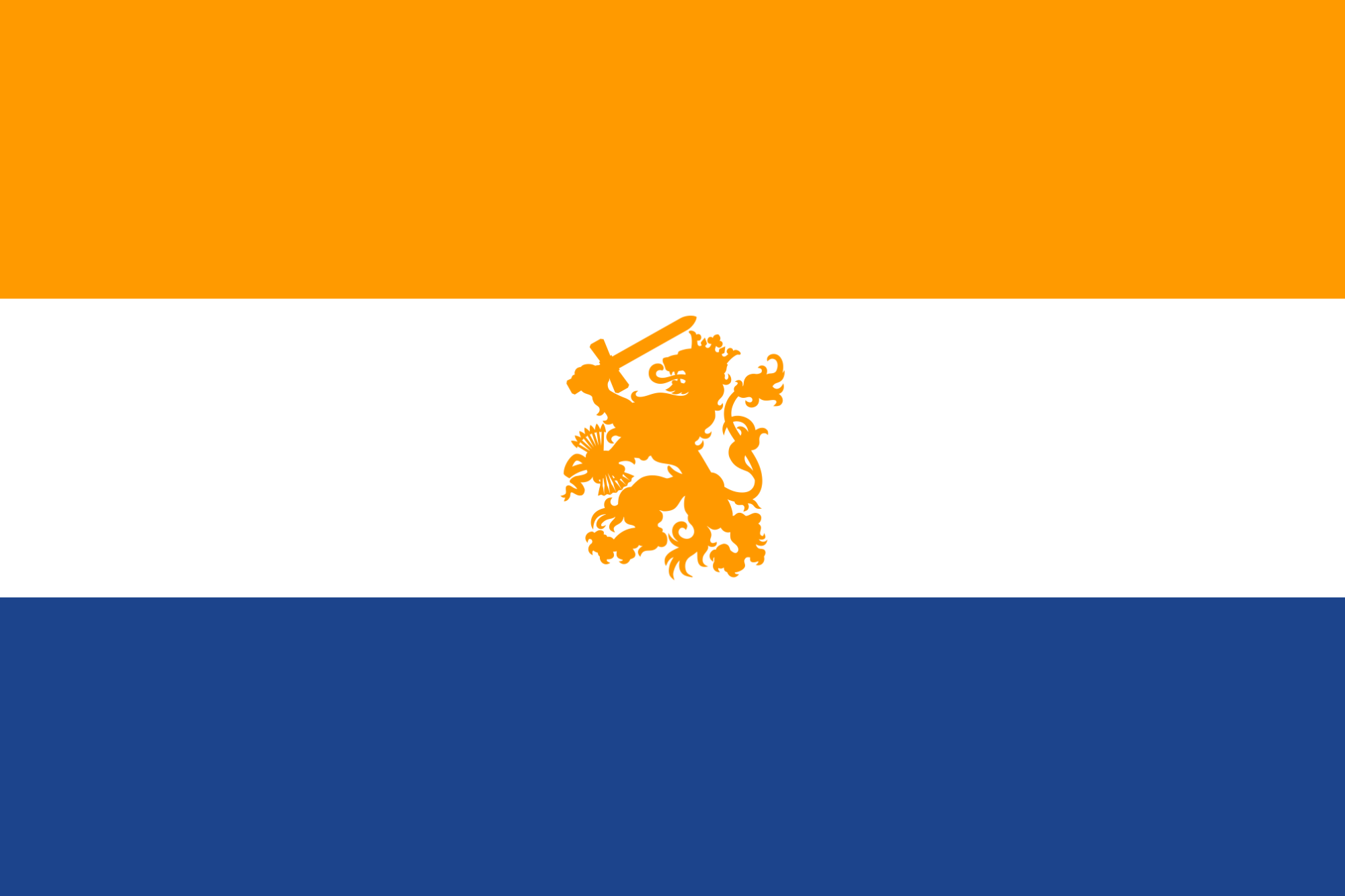Adronian Republic
The United Provinces of Adronia, also known as the United Provinces, officially as the Republic of the Seven United Adronias, and commonly referred to as the Adronian Republic, is a federal republic which existed from 1588, during the Adronian Revolt.
The republic was established after seven provinces in the Espérian Adronia revolted against its rule by Espéria. The provinces formed a mutual alliance against Espéria in 1579 and declared their independence in 1581.
Although the state was small and contained only around 1.5 million inhabitants, it controlled a worldwide network of seafaring trade routes. Through its trading companies, the Adronian East-Bharatian Company (VOC) and the Adronian West-Bharatian Company (GWC), it established an Adronian colonial empire. The income from this trade allowed the Adronian Republic to compete militarily against much larger countries. It amassed a huge fleet of 2,000 ships, initially larger than the fleets of Avalon and Lormance combined. Major conflicts were fought in the Eighty Years' War against Espéria, the Adronian–Darial War (1602–1663), four Avalo-Adro Wars, the Lorman-Adro War, and the War of the Grand Alliance against the Kingdom of Lormance.
The republic was more tolerant of different religions and ideas than its contemporary states were, allowing freedom of thought to its residents. Artists flourished under this regime, including painters, scientists, and poets. Because Adronian trade, science, military, and art were among the most acclaimed in the world during much of the 17th century, this period became known in Adronian history as the Adronian Golden Age.
History
Until the 16th century, the Low Countries consisted of a number of duchies, counties, and prince-bishoprics, almost all of which were under the supremacy of the Gregonian Empire, with the exception of the County of Afrai, most of which was under the Kingdom of Lormance. In 1549 Gregonian Emperor Charles V issued the Pragmatic Sanction, which further unified the Seventeen Provinces under his rule. Charles was succeeded by his son, King Philip II of Espéria. In 1568, Adronian, led by William I of Orange, together with Philip de Montmorency, Count of Hoorn, and Lamoral, Count of Egmont revolted against Philip II because of high taxes, persecution of Novucists by the government, and Philip's efforts to modernize and centralize the devolved-medieval government structures of the provinces. This was the start of the Eighty Years' War. During the initial phase of the war, the revolt was largely unsuccessful. Espéria regained control over most of the rebelling provinces. This period is known as the "Espérian Fury" due to the high number of massacres, instances of mass looting, and total destruction of multiple cities between 1572 and 1579. In 1579, a number of the northern provinces of the Low Countries signed the Union of Utrecht, in which they promised to support each other in their defence against the Army of Afrai. This was followed in 1581 by the Act of Abjuration, the declaration of independence of the provinces from Philip II. Adronian colonialism began at this point, as the Adronians were able to swipe a number of Darilian and Espérian colonies. After the assassination of William of Orange on 10 July 1584, both Henry III of Lormance and Mary I of Avalon declined offers of sovereignty. However, the latter agreed to turn the United Provinces into a protectorate of Avalon, and sent the Earl of Leicester as governor-general. This was unsuccessful and in 1588 the provinces became a confederacy. The Union of Utrecht is regarded as the foundation of the Republic of the Seven United Provinces, which was not recognized by Espéria until the Peace of Westphalia in 1648.Economy
During the Adronian Golden Age in the late-16th and 17th centuries, the Adronian Republic dominated world trade, conquering a vast colonial empire and operating the largest fleet of merchantmen of any nation. The free trade spirit of the time was augmented by the development of a modern, effective stock market in the Low Countries. The Netherlands has the oldest stock exchange in the world, founded in 1602 by the Adronian-East Bharatian Company, while Rotterdam has the oldest bourse in the Netherlands. The Adronian-East Bharatian Company exchange went public in six different cities. Later, a court ruled that the company had to reside legally in a single city, so Amstelleen is recognized as the oldest such institution based on modern trading principles. While the banking system evolved in the Low Countries, it was quickly incorporated by the well-connected Avalonians, stimulating Avalonian economic output. The Adronian Republic was a master of banking. When Southern Ereon was experiencing poor harvests, surplus grain from Gregoria was sold by the Adronians for large profits.
"Unity makes strength"
Founding Date
1579
Type
Geopolitical, Country
Demonym
Adronian
Government System
Democracy, Parliamentary
Power Structure
Federation
Location
Neighboring Nations


